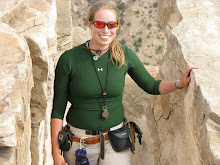The map says 8.6 because that was the original calculated magnitude; it was revised up to 8.8 a short time after. Revisions are possible because as more time passes, more seismic stations worldwide pick up readings from the earthquake. The more seismic readings, the better scientists can analyze the nature of the earthquake and how it travels through the earth.
The beach ball today is oriented differently than the one from Japan that I described yesterday. You see a colored segment surrounded by white segments. Colored quarters of these spheres represent compression, and white quarters represent extension tension.
With a compression segment centered like this between two white segments, it's indicative of compression along the fault, or a thrust fault.
Sounds like there was a 9 foot tsunami and less than 100 confirmed dead so far. Expect these numbers to rise. My e-mail inbox is flooded with notifications of the aftershocks coming in above magnitude 5.0. The largest one so far was 6.9, and apparently as of now the tsunami warning worldwide has expanded. I expect the tsunami elsewhere could well be bigger.
As screwy as it might be, geologists get REALLY geeked out when this happens. While we hate to see death tolls, especially like what we saw with the Port-Au-Prince earthquake in January (I was in Curaçao when that happened - we didn't feel it then because we were on a dive when it would've shaken the island), the geology FASCINATES us. Earthquake prediction and mitigation is an inexact science at best. Typically, quake-prone places we know the most about have frequent, small earthquakes, like some parts of California. Those aren't places we're as worried about. The places we DO worry about are the ones where faults are quiet for a very long time, building up massive amounts of stress, then release it all at once. Since there are fewer, less frequent quakes there, we can't know as much about them.
The difference in quake frequency from place to place, even along the San Andreas Fault in California, is based in many things: structure and strength of the country rocks, their tendency toward ductile or brittle deformation under high pressure, hardness of constituent minerals (e.g. feldspar (H=6) vs. serpentine (H<2.5)), and nature/rate of movement along the fault running through the rocks.
I'm not even going to get started about some of the comments I saw on CNN's article about the Japan quake yesterday, nor the ones I'll undoubtedly be reading today. The level to which this country's lack of education about natural risks is astounding. Maybe I'll post a few gems later.
Since it's 10 am and I've been fielding earthquake data back and forth with some of my fellow scientists and I haven't yet had breakfast, I'm out.

No comments:
Post a Comment